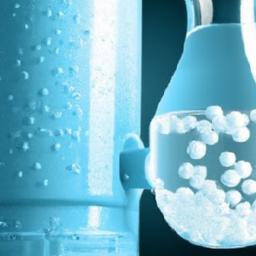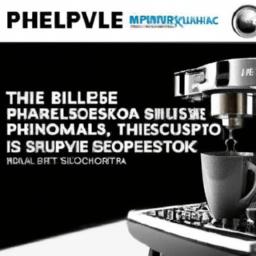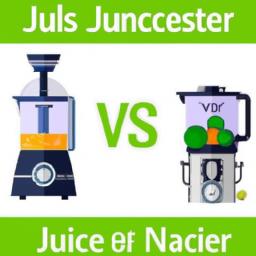Understanding the Difference Between Water Softeners and Water Purifiers: Which One Should You Choose?
Water can be quite complex-sometimes it feels harsh, other times it has an unpleasant taste or even looks cloudy. When addressing water quality issues at home, the options often come down to water softeners and water purifiers. But what exactly do these devices do? Are they interchangeable or do they serve distinct purposes?
At How To Cook Gourmet, we want to demystify these technologies because the type of water you use influences everything from your culinary creations to the healthiness of your skin. Let’s dive in to discover whether a water softener or purifier is the better fit for your needs.
The Science Behind Water Softening and Purification
Softening and purifying water are two separate processes aimed at improving water quality, but they tackle different issues.
How Does Water Softening Work?
Hard water contains minerals like calcium and magnesium that cause buildup in plumbing and leave residue on dishes. A water softener uses an ion exchange method, replacing these minerals with sodium or potassium ions. Imagine it as swapping rigid, rough particles for softer ones, resulting in water that is gentler on your skin, hair, and household appliances.
What Happens During Water Purification?
Purification focuses on eliminating harmful microorganisms, chemicals, and unpleasant tastes from water. Techniques include filtration, often with activated carbon, and UV light treatment to destroy bacteria and viruses. This process ensures that water is not only palatable but safe for consumption.
| Water Softener | Water Purifier |
|---|---|
| Removes minerals causing hardness | Eliminates pathogens and pollutants |
| Employs ion exchange technology | Utilizes filtration or UV sterilization |
| Enhances feel and smoothness | Improves safety and taste |
| Protects appliances and pipes | Supports health by ensuring clean water |
Have you noticed soap doesn’t lather well in some water? That’s often due to mineral content, which softening addresses. Meanwhile, purification tackles cleanliness and flavor, starting from a different angle. So which treatment does your household water truly require?
Distinguishing Between Soft Water and Pure Water
Though soft water and purified water might seem similar, they differ considerably in composition and intended use.
Characteristics of Soft Water
Soft water has most calcium and magnesium removed, resulting in a silky, slippery sensation when bathed in. It prevents scale buildup in plumbing, reducing soap scum and spotting on wares.
Understanding Pure Water
Pure water is stripped of nearly all minerals, chemicals, and contaminants, delivering essentially clean H2O. It has a neutral taste and is ideal for drinking and food preparation.
| Feature | Soft Water | Pure Water |
|---|---|---|
| Mineral Level | Low (calcium, magnesium reduced) | Minimal to none |
| Texture on Skin | Silky and slippery | Clean and neutral |
| Taste Profile | Slightly salty or mineral-like | Flavorless or flat |
| Primary Use | Household cleaning and appliance care | Safe drinking and cooking |
Soft water extends the longevity of plumbing and appliances, and is gentler on skin and hair. Conversely, pure water prioritizes health by ensuring the liquid is contaminant-free, essential for ingestion and recipe integrity.
Why Hard Water Is Common in Many Homes
Does your soap fail to foam properly, or are you faced with persistent spotting on your dishes despite diligent washing? These are hallmark signs of hard water presence, loaded with calcium and magnesium minerals originating from geological formations like limestone or chalk.
Many municipal water supplies source groundwater that naturally picks up these minerals. If you live in areas with rocky or mineral-rich terrain, hard water intrusion is likely. You can verify by performing an at-home water hardness test or requesting a detailed water quality report from your supplier.
- Build-up of soap scum on fixtures
- Visible water spots and residue on glassware
- Sluggish drains caused by mineral deposits
- An off or metallic flavor when drinking tap water
Inside a Water Softener: How It Neutralizes Hardness
A water softener operates like a mineral exchange station. Inside a tank full of resin beads, calcium and magnesium ions latch onto the beads, which then release sodium or potassium ions into the water flowing through.
| Mineral | Function in Water | Softener Action |
|---|---|---|
| Calcium & Magnesium | Cause hardness and scale | Trapped by resin beads |
| Sodium or Potassium | Soft ions that do not cause buildup | Injected into water |
Periodically, the system cleans itself by flushing the accumulated minerals out using a salty brine solution, preparing the resin beads for a fresh cycle. This ion exchange dance transforms “hard” water into soft, scale-free water comfortable for daily use.
Water Purifiers: Defenders of Health and Taste
Water purifiers function as guardians, eliminating microbiological threats and chemical toxins that may be lurking unseen in tap water.
With modern households using water extensively for drinking, cooking, and even medication, maintaining its purity is paramount. A purifier combats:
- Bacteria, viruses, and protozoa
- Chlorine and other disinfectant remnants causing odor and taste issues
- Heavy metals such as lead and mercury
- Parasites and cysts harmful to human health
| Contaminant | Health Risk | Purifier Technique |
|---|---|---|
| Bacteria & Viruses | Infections, gastrointestinal issues | UV light or fine filtration |
| Chlorine & Chemicals | Unpleasant taste, potential irritants | Activated carbon filters |
| Heavy Metals | Chronic poisoning, neurological damage | Specialized adsorption or reverse osmosis |
Ensuring water purity directly impacts cooking outcomes, as clean water allows ingredients’ true flavors to shine without contamination altering subtle tastes.
Making the Right Choice: Softener or Purifier?
Deciding on a treatment depends on your home’s specific water issues, budget, and maintenance willingness.
Consider a water softener if:
- You experience visible scale deposits or soap scum
- Your appliances show signs of mineral damage
- You desire smoother water for skin care
A water purifier is preferred if:
- Your water has taste or odor problems
- Bacterial contamination is a concern
- Heavy metals or chemicals are present in your water tests
| Feature | Water Softener | Water Purifier |
|---|---|---|
| Ideal for | Hard water mitigation | Removes contaminants and pathogens |
| Installation costs | $600 to $2,700 (varies by system size) | $350 to $1,600 (depending on filter type) |
| Regular upkeep | Salt replenishment | Filter or UV lamp replacement |
| Water taste effect | Water may taste slightly salty | Generally enhances taste |
Align your choice with both your water quality and lifestyle. Softening might have higher initial costs and ongoing salt purchases, while purifiers need timely filter changes. Understanding your water’s unique profile is crucial to making an informed decision.
Combining Softening and Purification: Synergy in Action
You can absolutely equip your home with both a water softener and a purifier, creating a comprehensive water treatment system. The recommended sequence is to soften the water first to remove hardness-causing minerals, then purify it to eliminate biological and chemical impurities. This order prevents premature clogging of purification filters and maximizes system efficiency.
| Step | Process | Purpose |
|---|---|---|
| 1 | Water Softening | Eliminate mineral scale formation |
| 2 | Water Purification | Remove pathogens and chemical contaminants |
The combined system ensures water that is both soft to touch and safe for consumption-a true win-win. Although installation costs and complexity may increase slightly, many households find the investment worthwhile for improved water quality throughout their home.
Final Thoughts: Tailoring Water Treatment to Your Needs
Your choice between a water softener or purifier fundamentally hinges on what you want from your home’s water supply. If your main concerns are soap scum, appliance damage, and skin health, softening is the way to go. If taste, odor, and safety top your list, purification is essential.
| Use Case | Water Softener | Water Purifier |
|---|---|---|
| Protection of plumbing and appliances | Yes | No |
| Enhancement of water taste and safety | No | Yes |
| Removal of microorganisms | No | Yes |
| Reduction of soap scum | Yes | No |
Also, consider combining systems if your water faces multiple issues. Just as expert chefs use various tools for the best results, smart water management often involves tailored solutions.
FAQs: Clearing Up Common Questions
Q: What’s the primary role of a water softener?
A: It removes minerals causing hardness, like calcium and magnesium, softening water to protect appliances and improve skin feel.
Q: How does a water purifier differ?
A: It targets contaminants including germs, chemicals, and heavy metals, ensuring the water is safe and pleasant to drink.
Q: Can a softener make water safe to drink?
A: No, it does not eliminate pathogens or chemical pollutants; it only reduces hardness.
Q: Is a purifier sufficient for all water problems?
A: Not necessarily; purifiers usually don’t address hardness, so additional softening might be needed.
Q: What if I use both systems?
A: You benefit from softened water that is also purified, combining comfort and safety.
Q: How to decide which system suits your needs?
A: Identify whether mineral buildup or contaminants affect your water quality most, then choose accordingly.
Q: Are water softeners environmentally friendly?
A: They use salt for regeneration, which can impact the environment if improperly managed; consider eco-friendly options.
Q: Can purifiers remove heavy metals?
A: Certain purifiers with specialized filters can; verify specifications before purchase.
Q: Which is more costly?
A: Water softeners generally have lower upfront costs but higher maintenance; purifiers may require more upfront investment but simpler upkeep.
Summary: Finding Your Ideal Water Solution
In conclusion, water softeners and purifiers each serve distinct but complementary roles in enhancing home water quality. Softeners tackle hardness by exchanging minerals, preventing scale and improving skin feel. Purifiers focus on health, eliminating contaminants to make water safe and tasty.
| Feature | Water Softener | Water Purifier |
|---|---|---|
| Removes | Calcium, magnesium, minerals causing hardness | Bacteria, viruses, chemicals, heavy metals |
| Main benefit | Prevents buildup, improves skin feel | Ensures water safety and better taste |
| Best application | Household cleaning, appliance preservation | Drinking and cooking water treatment |
Your water is unique, and so should be your approach to improving it. Whether you opt for a softener, a purifier, or both, understanding your water’s composition and your specific needs will guide you to the best choice.




